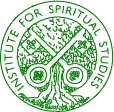
|
|
Seven Varieties of
|
A seminar presented by Associate Professor David Hilliard on August 29, 2007David Hilliard remarked at the outset that Anglo-Catholicism was "never a homogeneous movement." It had grown out of the Tractarianism of the 1840s in England where, by the 1920s, he said the English were "nostalgic about it." Yet in Australia, he claimed it reached its peak by the 1950s; this peak was also reflected in the numbers of religious. He noted the different approaches in the different provinces of this continent. And the seven varieties or tendencies? Hilliard began with the extremists. Here he distinguished between the English catholic nationalists, who were "restrained and tasteful", and the Anglo-Papists, of whom he said there were a few clergy now. These tended to use the Roman Missal, and said the Rosary. The Catholic League was formed in 1913 and various priests such as Fr Cyril Barclay, Fr Wise, Fr Frost, and Bishop Hazelwood would be classed in this second group. A few like Fr Jarrett converted to Rome. In the 1980s and 1990s there was more secession over the priesting of women. Some he said had returned. He noted that in New Zealand this issue had been less contentious. Secondly, he mentioned the social activists. From the 1850s the two main streams he saw were the redemptionists, concentrating on personal religion, and the incarnationalists, who favoured a more equitable society and were influenced by socialism. The incarnationlist clergy included Fr Charles Marston, an Adelaide Fabian pioneer, Fr John Hope of Christ Church St Laurence in Sydney and Fr Farnham Maynard of St Peter's Eastern Hill. He noted here that incarnationalists were city-based, while redemptionists tended to be rural-based like Bishops Hazelwood and Shevill. Thirdly, there were the ecumenists. Hilliard noted that Christian unity schemes encouraged by the Australian Church Union and the Student Christian Movement provoked little interest and some hostility. Some Anglo-Catholics opposed ecumenism. The Revd Davis McCaughey, Fr Hebert, Fr Percy Jones, and Bishop Halse were four clergy from different backgrounds behind the idea which led to the Week of Christian Unity starting in 1955. In 1948 the World Council of Churches had been formed overseas. The fourth group were the Anglo-Catholic theologians. These included the Revd T.M. Robinson at Morpeth, Fr Barry Marshall who "left little in print," and Fr Hebert who wrote 'Fundamentalism and the Church of God' (1956). Theology was not studied inside Australian universities. Part-time staff taught this subject. Anglican theological colleges, Hilliard observed, "were poorly funded." Two notable Anglo-Catholic scholars were Fathers Maynard and Bennie. Fifthly, there were the missionaries. At one time, from St Peter's Eastern Hill and Christ Church St Laurence came "a stream of (missionary) recruits," mainly nurses and teachers. David Wetherall has referred to a "romantic, unworldly" factor here and a lack of interest in the world of Western commerce. He noted too that Bishop Strong had rejected the Church Missionary Society's offer to work in the Papua New Guinea Highlands after the 1950s. The sixth group alluded to were the founders of religious communities. These orders have been in the Australian colonies and then the states since the 1890s. They include the Community of the Holy Name, the Society of the Sacred Mission, the Sisters of the Church, the Franciscans, and ten Bush Brotherhoods. Altogether Hilliard said there had been fourteen female and ten male Anglican religious orders in Australia. (They are listed in a compendium to Tom Campbell's 'Directory of ANZ Communities'.) He noted particularly two important founders: CHN's Mother Esther and SSA's Mother Emma. As well, there is Michael King, a curate at St Peter's Eastern Hill in the 1970s. The seventh and final group were the rebels and dissidents. These the speaker thought were "counter-cultural". They would be either conservative or radical. Some favoured an exclusive sect idea or were anti-Protestant. Others favoured ancient rituals or stressed a divinely-inspired hierarchy. Others again maybe just didn't fit into ordinary family, suburban life. There was a homosexual influence too, which before the 1970s was secretive in its manifestation. After the 1970s, with the growth of an open gay subculture in Australia, there were fewer gays to be seen in the church. Another dissident group were Tories who favoured ancient traditions, like Henry Dutton of South Australia and Wilfred Kent Hughes. Others were on the radical left, like the Socialist Canon Coaldrake and Helen Badie, whose interest was in Aboriginal justice. David Hilliard asked what had happened to the Anglo-Catholic movement since the peak of the 1950s. He recommended Alan Wilkinson's 'Requiem for Anglo-Catholicism'. This book describes how the movement had become inward looking and sectarian. With important changes in the Roman Catholic liturgy, the Second Vatican Council, and new scholarship and population changes in Australia since the 1960s, the Anglo-Catholics have been on the defensive. Working class Australians have moved to new housing estates; there have been new migrants; evangelicals have better targeted youth. Above all, three issues have significantly divided Anglo-Catholics: divorce, the ordination of women, and homosexuality. If Anglo-Catholics are to develop, said the speaker, they need a clear vision developed so they can "move on". Otherwise they will remain "fossilised" or display ambiguity as they are affected by social forces. They need to "renew the drifting church." The ordination of women issue has caused splits among the Anglo-Catholics, between the conservatives and the liberals and feminists. Hilliard said that the need for reconciliation between the groups Affirming Catholicism and Forward in Faith was urgent. Summing up, David Hilliard thought the Anglo-Catholics had grown out of English national Catholicism, had been liturgically influential, had been socially involved, interested in modern scholarship, were strong theologically, and were still a strong influence. In answer to various questions Hilliard made the following points:
This site is hosted by St Peter's Eastern Hill,
Melbourne, Australia. |